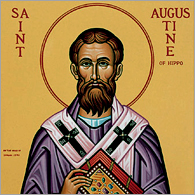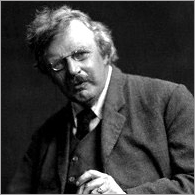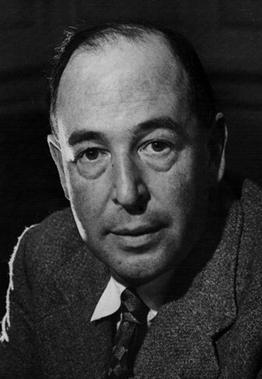In 1820, a Catholic astronomer named Canon Giuseppe Settele wrote a book in which he presented the motion of the earth as a legitimate conclusion of science. Roman censor, Fr. Filippo Anfossi, denied his book an imprimatur on the grounds that it was contrary to the 1633 decree against Galileo. Canon Settele appealed to Pope Pius VII and, after an official deliberation, the Holy Office promulgated the Pope’s official ruling:
His Holiness has decreed that no obstacles exist for those who sustain Copernicus’ affirmation regarding the earth’s movement in the manner in which it is affirmed today, even by Catholic authors. . . . the above mentioned affirmation [of Copernicus], as it is has come to be understood, does not present any difficulties (see “The Magisterium Rules: The Debate is Over”).
Based on this official ruling of the Church’s Magisterium, Catholics have been perfectly free to hold that our earth revolves around the sun just like any other planet, with no fear of doctrinal taint. And for the two hundred years following this ruling, the whole Magisterium – all the popes and all the bishops in communion with them – have acted in accord with Pius VII’s judgment, setting aside all notion that the motion of the earth presents any doctrinal difficulty to the Catholic faithful.
In this essay, I will highlight how an intervening event – the First Vatican Council – makes this doctrinal harmony all the more striking against the claims of the new geocentrists. In 1870, fifty years after Pius VII’s ruling on the earth’s movement, the First Vatican Council issued a decree concerning the Church’s duty and responsibility regarding scientific matters:
8. Furthermore the Church which, together with its apostolic office of teaching, has received the charge of preserving the deposit of faith, has by divine appointment the right and duty of condemning what wrongly passes for knowledge, lest anyone be led astray by philosophy and empty deceit.
9. Hence all faithful Christians are forbidden to defend as the legitimate conclusions of science those opinions which are known to be contrary to the doctrine of faith, particularly if they have been condemned by the Church; and furthermore they are absolutely bound to hold them to be errors which wear the deceptive appearance of truth.
– Vatican I, Session 3, Chapter 4, 24 April 1870 (my emphasis)
Fifty years prior to this decree of Vatican I, Pope Pius VII officially ruled that there were “no obstacles” or “any difficulties” for the Catholic faithful to hold that the earth moves. At least four conclusions follow inevitably from this:
1) the motion of the earth cannot be anything other than a “legitimate conclusion of science,”
2) The motion of the earth cannot be “contrary to the doctrine of faith,”
3) the council fathers of Vatican I did not consider the motion of the earth to have been “condemned by the Church,” and therefore,
4) with respect to modern cosmological views which uphold the motion of the earth, the Catholic faithful are not “absolutely bound to hold them to be errors” (in the words of Vatican I), but are perfectly free to hold them.
The only way that the new geocentrists can maintain their view is to insist on a complete collapse of the Church’s Magisterium over several centuries (see “Geocentrism: Tempest in a Teapot or Theological Shipwreck?”).
It’s important to first recall that the last magisterial act that touched on the matter of Copernicanism was in 1664 when Pope Alexander VII undertook to republish the Index of Forbidden Books. The new geocentrists spin this action as if it had some direct bearing on the geocentrism controversy, but it really doesn’t. The Index at that time contained hundreds of works, spanning dozens of different topics. Along with the republication of the Index, Pope Alexander attached the various decrees that had been promulgated by his predecessors in conjunction with various works being placed on the Index (“the aforesaid earlier classifications and annotations (wherever these exist) will be cited, along with the decrees by which the books were originally censured.”) His stated reason for doing so was “quo rei ab initio gestae series innotescat,” or, following Fr. Brian Harrison’s translation, “In this way the case history of each censured book will be made known” (GWW2, p. 225). In other words, this was merely an updating of the Index so as to include the relevant historical material—it did not add any new papal authority to the prohibition against particular books on the Index.
Now here’s the scenario the new geocentrists have to uphold in order for them to be correct:
1) Since 1664, during which time non-geocentric views were becoming more and more widespread, every magisterial action has been to remove restrictions against those non-geocentric views. For example, in 1741, Pope Benedict XIV allowed publication of the complete works of Galileo (link). And in 1758, a new edition of the Index of Forbidden Books removed the general stricture against works supporting non-geocentric views (link). In each of these cases, the geocentrists have to hold that popes were betraying their duty to protect the faithful. As the commissary general of the Holy Office argued in 1820, these facts force them to hold that for centuries the, “popes have been deceptive because they have no longer spoken against this doctrine despite the fact that it was constantly acquiring more and more embellishments from supporters and was becoming universally held” (M. Finocchiaro, Retrying Galileo, p. 214f.)
2) All the more, then, they must hold that Pope Pius VII was grossly derelict in his duty and gravely harmed the very faith of the Church when in 1820 he gave positive permission for Catholics to hold to the earth’s motion. In fact, Sungenis casts Pius VII as a pope in his dotage, labelling him as “infirm and compliant” and then accuses him of “capitulation” (“Geocentrism: Tempest in a Teapot or Theological Shipwreck?”).
3) They must hold that Pope Gregory XVI, who is revered by Catholic traditionalists for his condemnations of liberalism and indifferentism, betrayed the Catholic faith in removing all non-geocentric works from the Index in 1835. And again, in fact, Sungenis argues this very thing in GWW. The charges he levels against this Pope include, “an utter disrespect for his patrimony and his papal predecessors”, and “his unprecedented upheaval of Catholic tradition and authority”. In the final analysis, according to Sungenis, “Gregory had a simple choice; either he could accept the God of his forefathers or accept the gods of modern science. He chose the latter” and thus, “Newton’s apple and Satan’s apple accomplished the same task of exposing the faithlessness of God’s chosen”. (For more on this, see “Geocentrism: Tempest in a Teapot or Theological Shipwreck?”).
4) According to their standards, the new geocentrists must hold that Pope Bl. Pius IX and the council fathers of Vatican I themselves were delinquent in their duty, since they all knew full well that the motion of the earth had been openly taught as a “legitimate conclusion of science” with the explicit blessing of the Holy See for 50 years prior. The Pope and bishops knew that this view had spread throughout the entire Church without a single peep from the Magisterium; the very Magisterium which they decreed, “has by divine appointment the right and duty of condemning what wrongly passes for knowledge”. Clearly, then, they did not consider the motion of the earth to be, “contrary to the doctrine of faith”. For the geocentrists, how can this be anything other than a wholesale betrayal of the faith?
5) To be consistent, the geocentrists must also hold that Pope Leo XIII betrayed the Catholic faith when he promulgated his encyclical Providentissimus Deus. Not only does he adopt the very hermeneutical principles espoused by Galileo (even citing the same passage from St. Augustine), but he explicitly teaches that the Holy Spirit didn’t put any details of the physical universe into sacred Scripture. The Pope calls this a “rule” of interpretation:
To understand how just is the rule here formulated we must remember, first, that the sacred writers, or to speak more accurately, the Holy Ghost “Who spoke by them, did not intend to teach men these things (that is to say, the essential nature of the things of the visible universe), things in no way profitable unto salvation.” Hence they did not seek to penetrate the secrets of nature, but rather described and dealt with things in more or less figurative language, or in terms which were commonly used at the time, and which in many instances are in daily use at this day, even by the most eminent men of science (Providentissimus Deus 18).
The geocentrists have tried to wriggle out of this by claiming that the Pope would have had to mention geocentrism by name. But a principle or rule, by its very nature, applies broadly, so the burden would be on the geocentrists to show that the Pope’s principle does not apply to geocentrism. And it is clear that the most obvious example of, “more or less figurative language, or in terms which were commonly used at the time, and which in many instances are in daily use at this day, even by the most eminent men of science” is the language of sunrise and sunset – the biblical language the geocentrists have used to try to “prove” that the sun moves around a stationary earth.
One very active on-line geocentrist candidly admits this, noting correctly that, “The only interpretation of note in the history of the Church that the encyclical could be referring to was the fixed sun/moving earth heresy [sic].” How to explain permission for this “heresy” in a papal encyclical? Not surprisingly, he resorts to concocting yet another, nefarious conspiracy theory: “We think [the encyclical] may have been written by Cardinal Campolla a Freemason” and “This is how Satan works even within the Church to bring about its destruction” (link).
This kind of appeal to the general infiltration and collapse of the Magisterium is really all that’s left for the new geocentrists, since it’s ridiculous to assert that the “rule” laid out by Leo XIII somehow doesn’t apply to those Scripture passages which allegedly teach geocentrism, when it manifestly does.
6) The geocentrists must also hold that Pope Benedict XV explicitly contravened the First Vatican Council, held just 50 years before, when he wrote in a papal encyclical that, “this earth on which we live may not be the centre of the universe as at one time was thought” (In Praeclara Summorum). If geocentrism were a doctrine of the faith, then it would be heretical for the Pope to state in an official document that it could be something that was, “at one time . . . thought” but now “may not be”. He makes this more clear by juxtaposing the centrality of the earth (clearly not a doctrine of the faith for him, since it “may not be”), with what he considers actual doctrines of the faith: mankind’s original innocence, fall, and redemption through Jesus Christ.
7) They must hold that Pope Pius XII betrayed the Catholic faith when in Divino Afflante Spiritu he reiterated Leo XIII’s teaching that,
there is no error whatsoever if the sacred writer, speaking of things of the physical order “went by what sensibly appeared” as the Angelic Doctor says, speaking either “in figurative language, or in terms which were commonly used at the time, and which in many instances are in daily use at this day, even among the most eminent men of science.” For “the sacred writers, or to speak more accurately – the words are St. Augustine’s – the Holy Spirit, Who spoke by them, did not intend to teach men these things – that is the essential nature of the things of the universe – things in no way profitable to salvation”; which principle “will apply to cognate sciences, and especially to history,” (Divino Afflante Spiritu 3).
Pope Pius XII reiterated this teaching knowing full well that this passage had been widely applied in the intervening time to the matter of geocentrism. That same pontiff presented Galileo as among the “most audacious heroes of research . . . not afraid of the stumbling blocks and the risks on the way, nor fearful of the funereal monuments” (link).
8) They must believe that Pope St. John Paul II publicly betrayed the true faith according to the geocentrists when he admitted to “The error of the theologians of the time, when they maintained the centrality of the earth” and stated that the ruling of his predecessor Pius VII “closed the debate” over whether geocentrism was a matter of faith (link).
9) And thus, by the new geocentrists standards, all the Popes from Pius VII to Francis have been utterly derelict in their duty since, even in the face of the ruling of an ecumenical council that it would be “forbidden” to do so, they have allowed Catholics everywhere to defend the motion of the earth, “as a legitimate conclusion of science”.
This is the picture the new geocentrists are forced to paint of the very same Magisterium of the Catholic Church that they claim to defend and uphold. Sungenis insists that rejection of geocentrism is at the heart of all the Church’s and indeed the world’s problems—he compares it to the very Fall itself: “We can see clearly how the Big Lie is developing. It will spread like a cancer through the Holy Office and eventually to the papacy itself. It is analogous to Satan twisting what God said to Eve in the Garden of Eden…” (GWW3, 9th ed., p. 341; my emphasis.) He argues that, “The simple fact is that the Church became intimidated by the claims of science and decided to sacrifice her tradition and her legacy for the pottage of ‘the opinions of modern astronomers’” (“Geocentrism: Tempest in a Teapot or Theological Shipwreck?”).
So according to the geocentric narrative, we’re supposed to believe that all the vicars of Christ and all the successors to the apostles in communion with them have for centuries been “intimidated by the claims of science” into betraying the true faith. We’re supposed to believe that these anointed men were all cowards and derelicts. Yet, we’re simultaneously supposed to believe that these very same cowards and derelicts have been courageous enough to withstand the mockery and ridicule of a very hostile world while standing firm on a host of moral and doctrinal issues such abortion, contraception, the true nature of marriage, and male-only ordination to the priesthood. Somehow, we’re to believe that the issue of geocentrism alone scared the wits out of all these men, bewitched them and turned them into traitors to the Faith.
The alternative explanation, of course, is simply to believe Christ and trust that the Holy Spirit guides His Church’s Magisterium. There is nothing contrary to the Catholic faith in holding that our Earth revolves around its sun, just like every other planet in the universe does. The actions taken against Galileo can be harmonized with Pius VII’s 1820 decree by applying the Church’s own perennial rules of canonical interpretation (see “Geocentrism and Strict Canonical Interpretation”). This explanation isn’t nearly as titillating as the tale of intrigue and treachery spun by the new geocentrists. But unlike their own position it aligns squarely with the facts and harmonizes with both canon law and the Catholic faith.
In the end, as it always seems to with the new geocentrists, it boils down to this simple question: Who are you going to trust and follow, the new geocentrists or the Magisterium of Christ’s Church?
The choice is yours.



